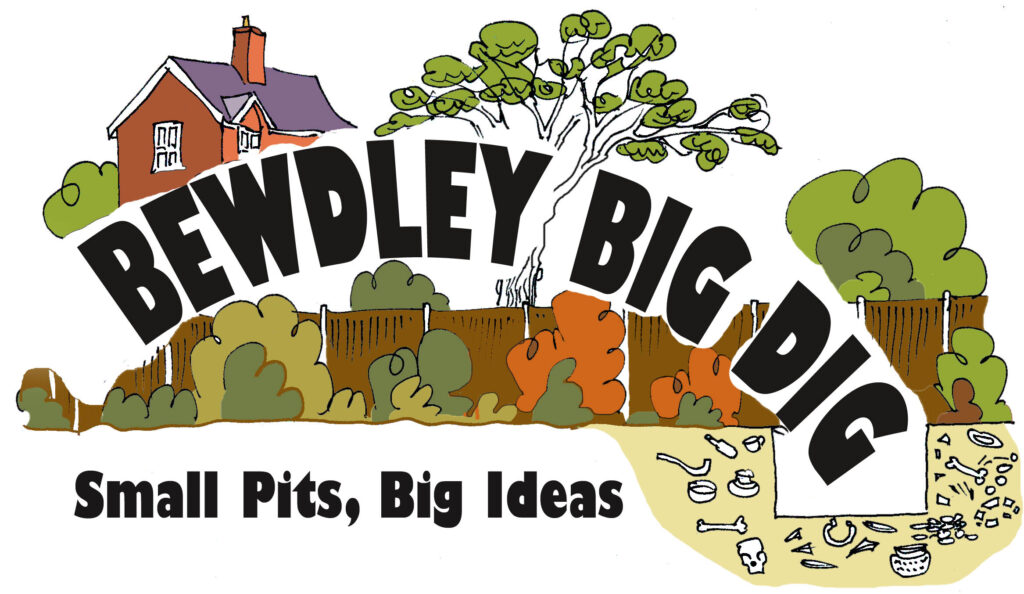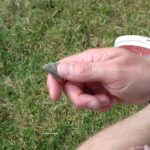…..

Bewdley was one of six places in Worcestershire to benefit from a Heritage Lottery Funded project to dig test pits. These 1m square pits have the soil removed in 10cm spits or layers and everything unnatural is removed and put in a bag. The aim is to get to the bottom of human occupation and hope the finds tell us something about the history of the area.
Bewdley was allowed 20 pits. One was dug in April 2022 behind 6 Kidderminster Road and much was found. However, it was clear the garden had been used as a dumping ground, especially for bricks and tiles.
Over the weekend of 9th and 10th July, 15 more pits were dug – two at Ribbesford, nine in Bewdley and four in Wribbenhall. The weather was hot and dry, but our diggers did a valiant job. There were 51 adults and 15 children involved. Professional archaeologists did the rounds making sure everything and everyone was alright. On the Saturday afternoon and all day Sunday a separate group of people began cleaning the finds.
On the Monday and Tuesday (11th and 12th July), four more pits were dug, this time by High School pupils, all the sites being within walking distance of the school. Each pit had four diggers who shared the workload and also did some finds cleaning; again there was professional archaeological supervision. Processing the numerous bags of finds continued for another four weeks after the digging had ended. This involved 26 adults and 5 children.
So what was found? A lot of concrete, bricks and rubble, but more interestingly a lot of china, bone, glass, slag, iron bits and clay pipe bowls and stems. The school pupils found the oldest item – a flint tool dated to 4000–1500BC, but they were more excited about discovering a dismembered Barbie doll!
On 27th February 2023, Nina O’Hare, the lead archaeologist, gave a presentation to the general public on the significance of what was found. She went through all the pits and showed that every pit yielded material – some of them were clearly sited on a rubbish dump. Few pits had their contents in dateable strata, as stuff was muddled up well. Only five pits were dug right down to the ‘natural’, that is, the layer beyond which there has been no disturbance and thus no archaeology. Another four may have reached that level, but the vast majority of pits did not, even though some were over one metre deep. This has to be borne in mind when considering any conclusions.
The pits which yielded flint (pre-historic) were all on the east side of the river and those which yielded medieval pottery were too, though the two pits behind Ribbesford church were rich in pottery from 12th to 14th centuries. One piece of 12thto 15th century pottery was found at 26 Load Street, as was a very rare fragment of a soda glass pedestalled vessel dated to the 16th to 17th centuries. The only Roman pot sherd was found in Jubilee Gardens. All this does not mean there was little early settlement in what is now the heart of Bewdley town; we just didn’t find the evidence.
Two pits were dug on Wyre Hill to test the theory that it was a suburban extension of the town in the 1460s. Nothing was found which debunks this idea.
There were quirky finds like the Wribbenhall School piece of china. We know the school had a tea party, marched through the village and had games on the Maypole in July 1906, but we don’t know why.
The main conclusion is that we need to dig more pits, as the project has raised as many questions as it answered.
Heather Flack 4th March 2023




